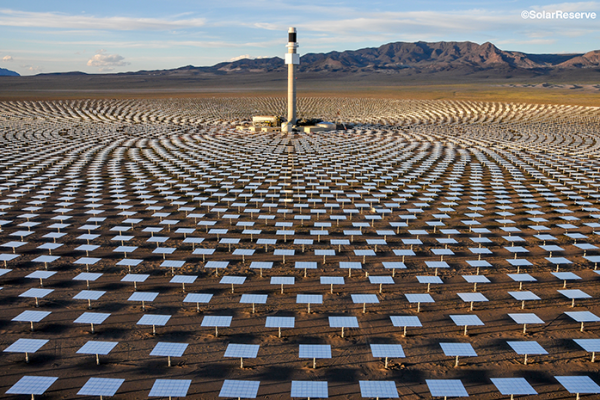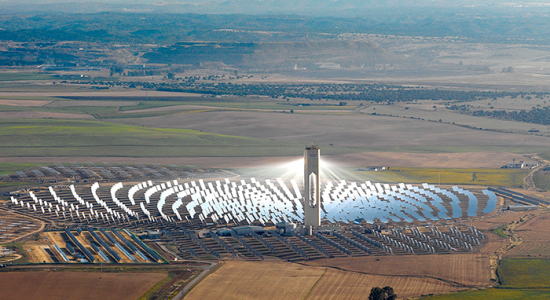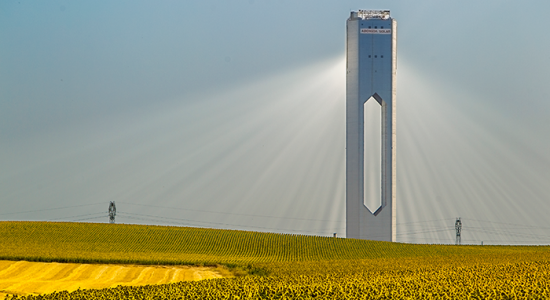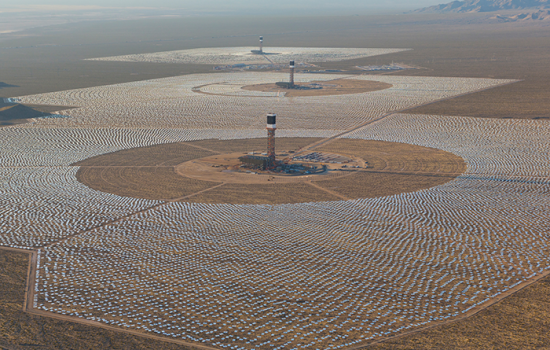Central receiver (or power tower) systems use a field of distributed mirrors – heliostats – that individually track the sun and focus the sunlight on the top of a tower. By concentrating the sunlight 600–1000 times, they achieve temperatures from 800°C to well over 1000°C. The solar energy is absorbed by a working fluid and then used to generate steam to power a conventional turbine. In over 15 years of experiments worldwide, power tower plants have proven to be technically feasible in projects using different heat transfer media (steam, air and molten salts) in the thermal cycle and with different heliostat designs.
The high temperatures available in solar towers can be used not only to drive steam cycles, but also for gas turbines and combined cycle systems. Such systems can achieve up to 35% peak and 25% annual solar electric efficiency when coupled to a combined cycle power plant.
The efficiency of these plants is usually better than Parabolic Trough plants, because fluid temperatures are higher – around 550°C. This leads to better thermodynamic performance and it also facilitates storage: smaller volumes are possible because of the higher temperature difference between the cold and the hot tanks.







